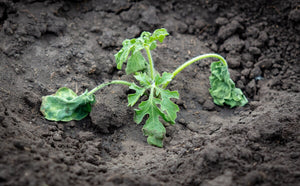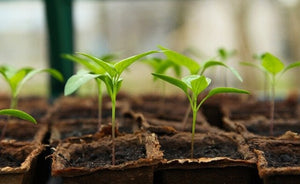From Seed to Blossom: How to Grow and Care for Shasta Daisies
DaisiesIf you're looking for an easy-to-grow perennial that will add a cheerful touch to your garden, consider the Shasta Daisy. This classic flower, named after the Shasta mountains in California, features white petals and a sunny yellow center. Not only do they bloom all summer long, but Shasta Daisies also attract beneficial insects to your garden. These low-maintenance flowers are perfect for wildflower and cottage gardens and will continue to bloom from early summer to late fall.

How to Grow Shasta Daisies From Seed
Shasta Daisy (Leucanthemum) is a beautiful perennial flower that is easy to grow from seed. Shasta Daisies can grow up to 30 inches tall and are perfect for cut flower arrangements. They also attract beneficial insects to your garden, making them a great addition to wildflower and cottage gardens.
To grow Shasta Daisies from seed, start indoors 6-8 weeks before the last frost date or sow directly outdoors when the soil temperature reaches 70ºF. With their easy care and long blooming season, Shasta Daisies are a must-have for any garden.


Tips for fail-proof Shasta Daisy seed germination
Sowing seeds indoors will give you more control over water, light, and temperature. The three most important things for seed germination.
- Use a seed starting mix.
- Gently press Shasta Daisy seeds onto the moist growing medium.
- Planting depth for seeds is 1/8”
- Shasta daisy seeds require light for germination. So be careful not to bury them.
- Mist the seeds with water.
- Use a humidity dome or cover to help keep moisture in and prevent the seeds from drying out.
- Optimal soil temperature for germination is 70ºF.
- Shasta Daisy seeds should start sprouting in 15 to 21 days.
- Once the seeds sprout and start sending down roots, water the seedlings from the bottom to avoid damping off.

Transplanting Shasta Daisy Seedlings
Once the seedlings are 2 to 4 inches high and have at least two true leaves, you can start the transplanting process.
- First, start by hardening off your seedlings. Tender daisy seedlings can’t go straight from the protective indoor environment to the outdoor garden.
- Also, you want to be past all chance of frost, and the ground should be 70ºF. Start with just an hour on the first day when taking them outside. Place them in a sheltered spot where they won’t get too much wind or sun.
- Then increase the amount of time each day. When the Shasta Daisy seedlings are ready for their life outdoors, transplant them in the evening. This gives them time to adjust before the hottest part of the day.
Shasta Daisy Care
Choose the right location to grow Shasta Daisies. They will grow best in full sun to partial shade with nutrient-rich, well-draining soil.
Sun
Shasta Daisies prefer full sun but can tolerate partial shade. However, full sun will result in more blooms.
Space
Space Shasta Daisy plants 1 to 2 feet apart. This will give them room to grow and have enough air circulation.
Soil
Nutrient-rich, loamy, moist soil will help your daisies thrive. Shasta Daisies can tolerate drought and poor soil, but will grow better in nutrient-rich soil.
Watering
Regular watering of about an inch a week is usually sufficient. Shasta Daisies tolerate dry conditions better than soggy soil. So water only as needed and ensure good drainage. Once they are established, Shasta Daisies are somewhat drought tolerant.
Fertilizing
Although Shasta Daisies can tolerate poor soil, you will have bigger plants with more blooms when the plants get enough nutrients. When transplanting outside, add some compost or fertilizer. For plants already in the ground, you can add fertilizer in the spring when they start growing again. A regular feeding schedule of every 2 to 4 weeks with fertilizer or compost will keep them healthy throughout the summer.

Deadheading
Deadheading Shasta Daisies will encourage more blooms. Once the flowers start to wilt, cut them off. Also, cutting bloom stems before they are fully unfurled to bring indoors will give you beautiful flowers to enjoy indoors while encouraging the plant to produce more blooms.
Winter Care
In cold climates, a little extra care is needed to protect Shasta Daisies. In the fall, you can cut back the flowers and foliage and cover the plants with mulch. Keep the soil more on the dry side to prevent root rot. Shasta Daisies will start growing again when the ground warms up in the spring. (Hardiness zones 5 - 9)
Dividing
Shasta Daisies are perennials that will last several years. But after a few years, they will start to die out. Divide Shasta Daisy plants every other year. Planting new seeds every other year will also give you a reliable supply of blooming daisy flowers.

Shasta Daisy Companion Flowers
Shasta Daisies grow well in all kinds of flower gardens.
- They are a natural in wildflower and cottage gardens.
- Their beautiful white petals are also perfect for moon gardens.
- Shasta Daisies pair well with other flowers that have similar growing conditions, such as Bee balm and Yarrow.
- For a contrast of color and shape, try planting with Lavender or Larkspur. Surround mounds of Shasta Daisies with Johnny-jump-ups or Sweet Alyssum.
Solutions for Shasta Daisy Pests and Diseases
Part of the appeal of Shasta Daisies is that they don’t have many pests or diseases.
They can suffer from root rot and wilt when they get too wet for a period of time. So prevention is key with careful watering.
Slugs and snails can be problematic in wet areas, so use appropriate control methods. And sometimes aphids can be a problem.

Harvesting Shasta Daisies
Shasta Daisies make a beautiful cut flower and have a long vase life. And harvesting Shasta Daisies the right way will encourage more blooms.
When cutting daisies, use sharp, clean flower scissors and cut right above a growth node. This will encourage side growth of additional flower stems.
We share more flower-cutting and arranging tips in our Planter’s Library.

Shasta Daisy FAQs
Can I grow Shasta Daisies in containers?
Shasta Daisies can be grown in containers, but they will die in soggy soil. So make sure to grow in pots with good drainage. They will also need additional applications of fertilizer.
Are Shasta Daisies deer resistant?
Luckily for us, deer don’t like to eat Shasta Daisies. However, if food sources are scarce, deer may try them out. But these hardy perennials will grow back.
Do Shasta Daisies bloom all summer?
Shasta daisies are excellent summer flowers and will bloom all summer long. Continue cutting and deadheading for continual flower growth.
Do Shasta Daisies spread?
A Shasta Daisy plant can spread 2 to 3 feet wide and be 3 to 4 feet high. They will also spread underground via rhizomes. Shasta Daisies can be divided every other year and transplanted to a new location. Divide Shasta Daisies in the spring or early fall. They will need time to take root to survive the winter.
When do you plant Shasta Daisies?
Shasta daisy seeds germinate best in soil with a temperature of around 70°F. Plant seeds outside after the soil has warmed up, or start indoors 6-8 weeks before the last frost date. Transplant outdoors once all danger of frost has passed.
Now that you know how simple it is to plant and care for Shasta Daisies, you’ll find it easy to pick a spot in your flower garden. The glowing white petals with bright yellow centers will be a welcome sight every year, with flowers all summer long.
4 comments
Popular Posts
-

How to Identify and Control Fusarium Wilt Disease in Your Garden
-

5 Great Reasons to Start Seedlings Indoors







Overcrowding could be a reason that the daisies aren’t blooming. They can be moved to containers and given more room to grow.
I have over twenty daisy plants growing in a raised bed. They may be overcrowded. My question is three flowers have bloomed but that’s all. Why won’t all the plants have flowers. And is it ok to pot them up in containers due to overcrowding?
Yes, you can save seeds from Shasta Daisies. As long as the seeds you save are from open-pollinated heirlooms – some hybrids can be sterile.
The flowers will need to be left on the plant long enough for the seeds to fully develop. Once the seeds have dried on the stem, you can shake them into a paper bag. Store the seeds in a cool, dry location. Then, follow the Shasta Daisy seed planting information found here. Enjoy!
I am Pres of a veterans group and memorial. We have Shasta Daisies doing great in one location. Q: can we deadhead flowers to harvest seeds to use to create new beds? If yes how do you recommend?
Leave a comment